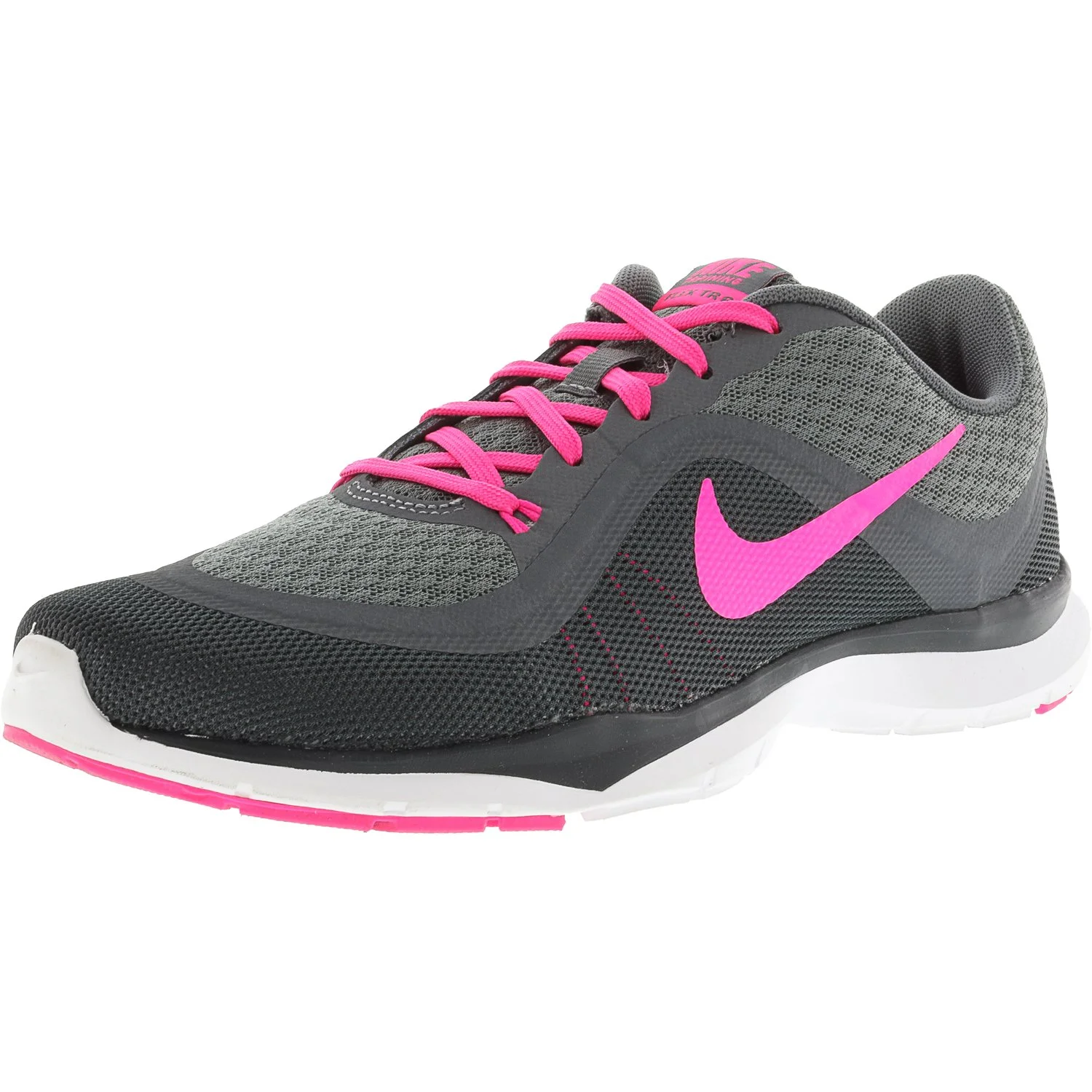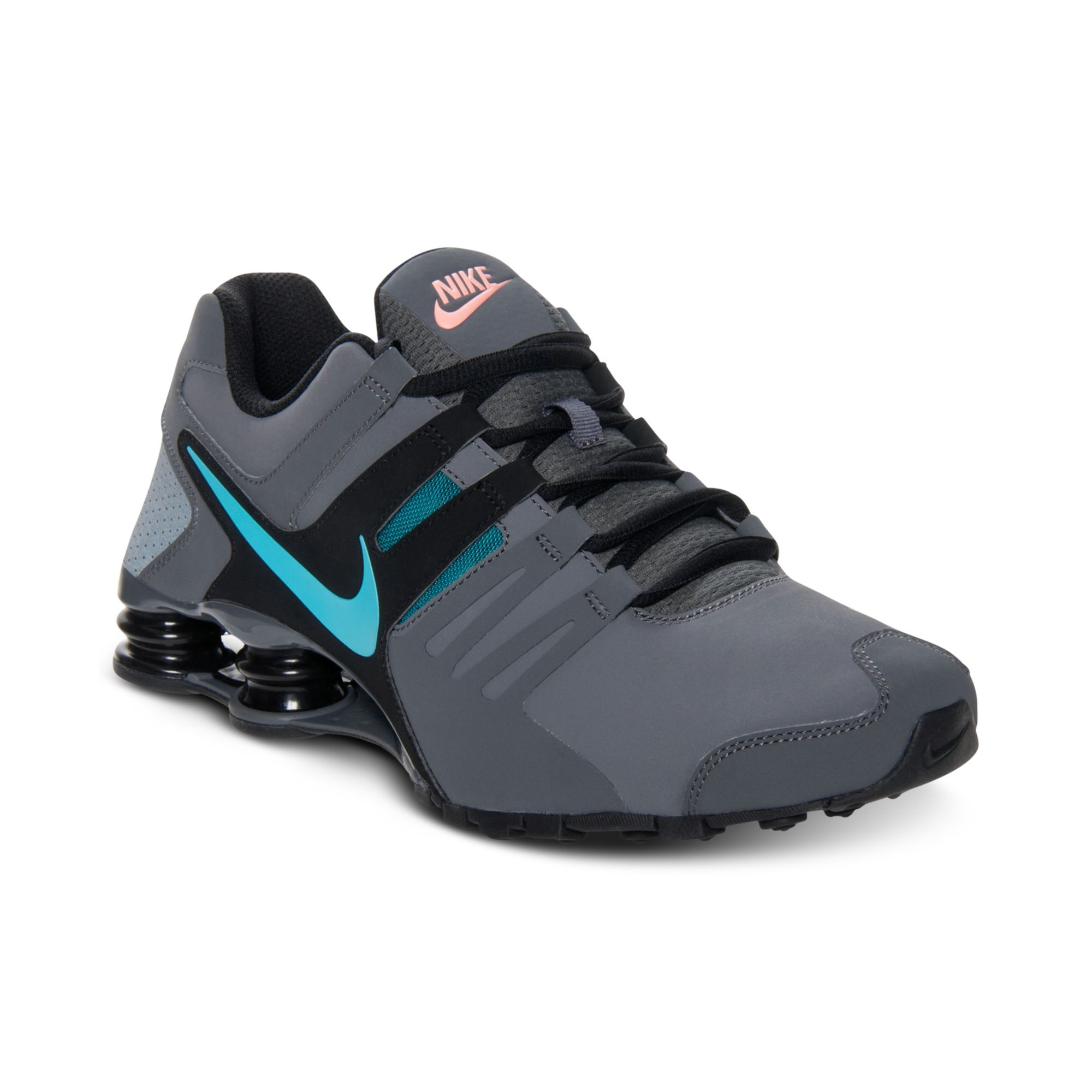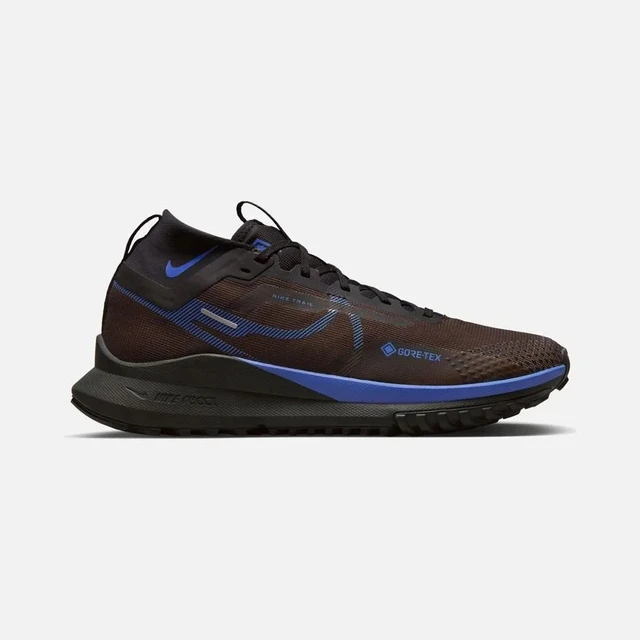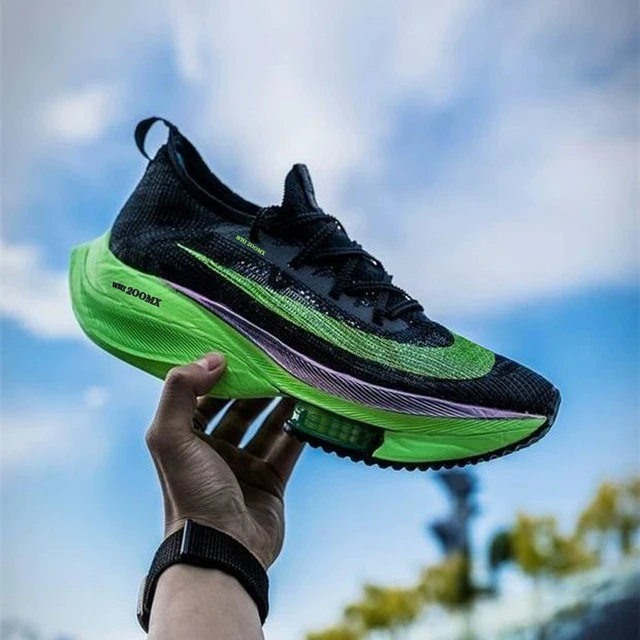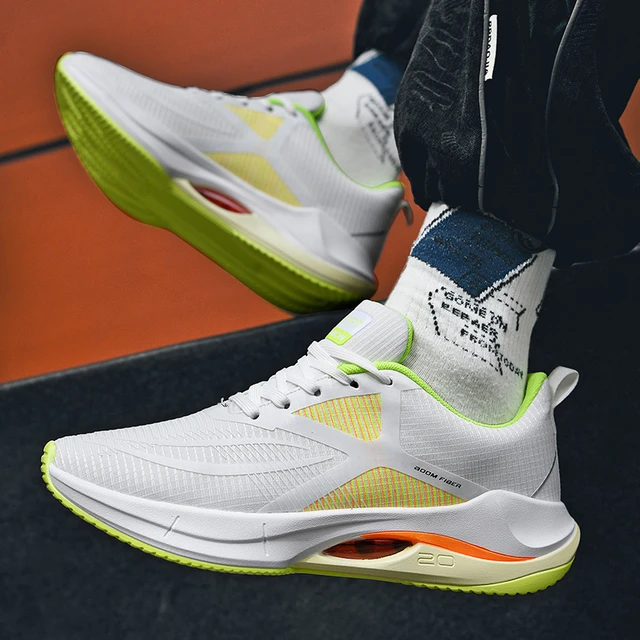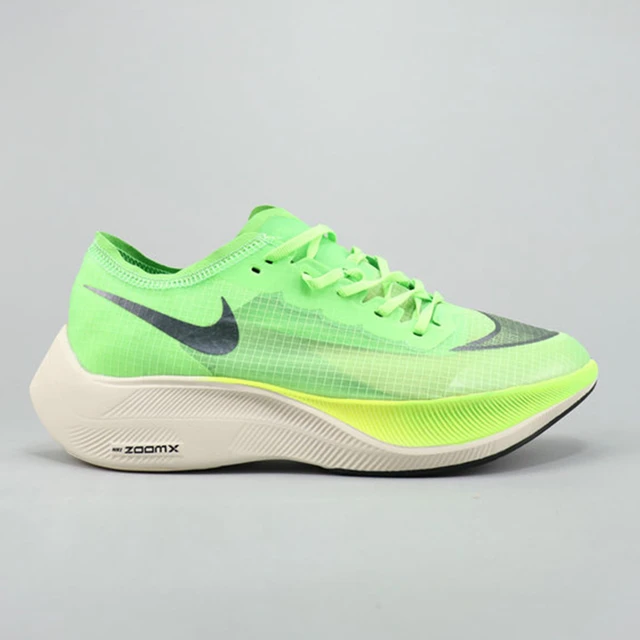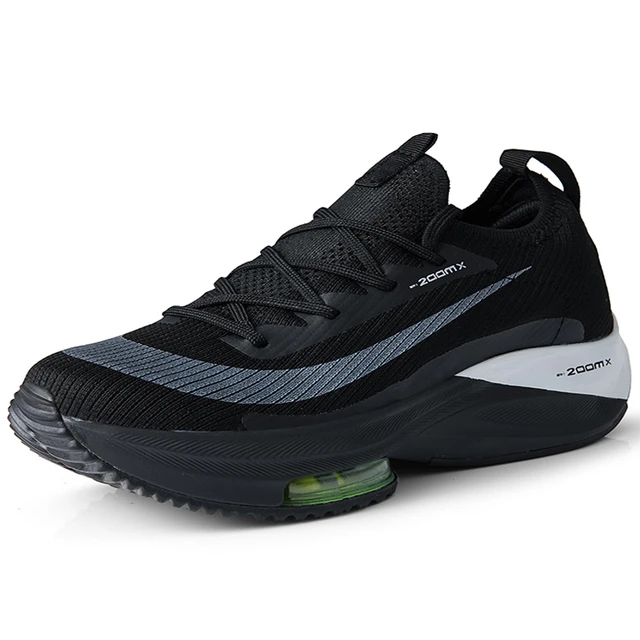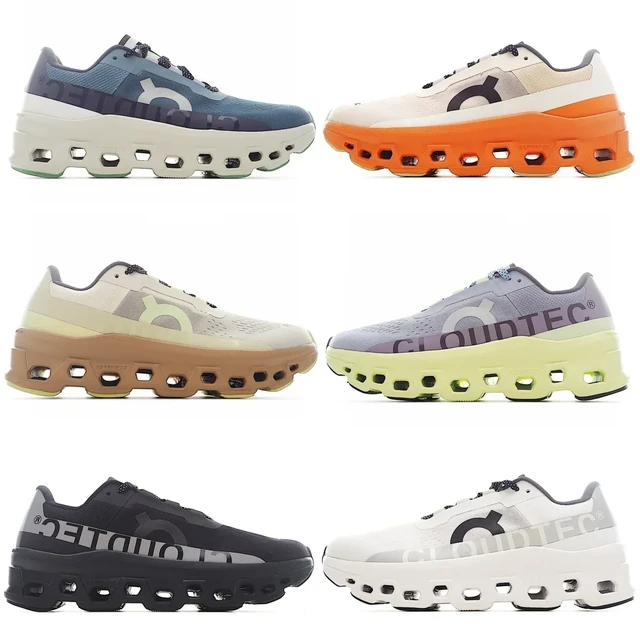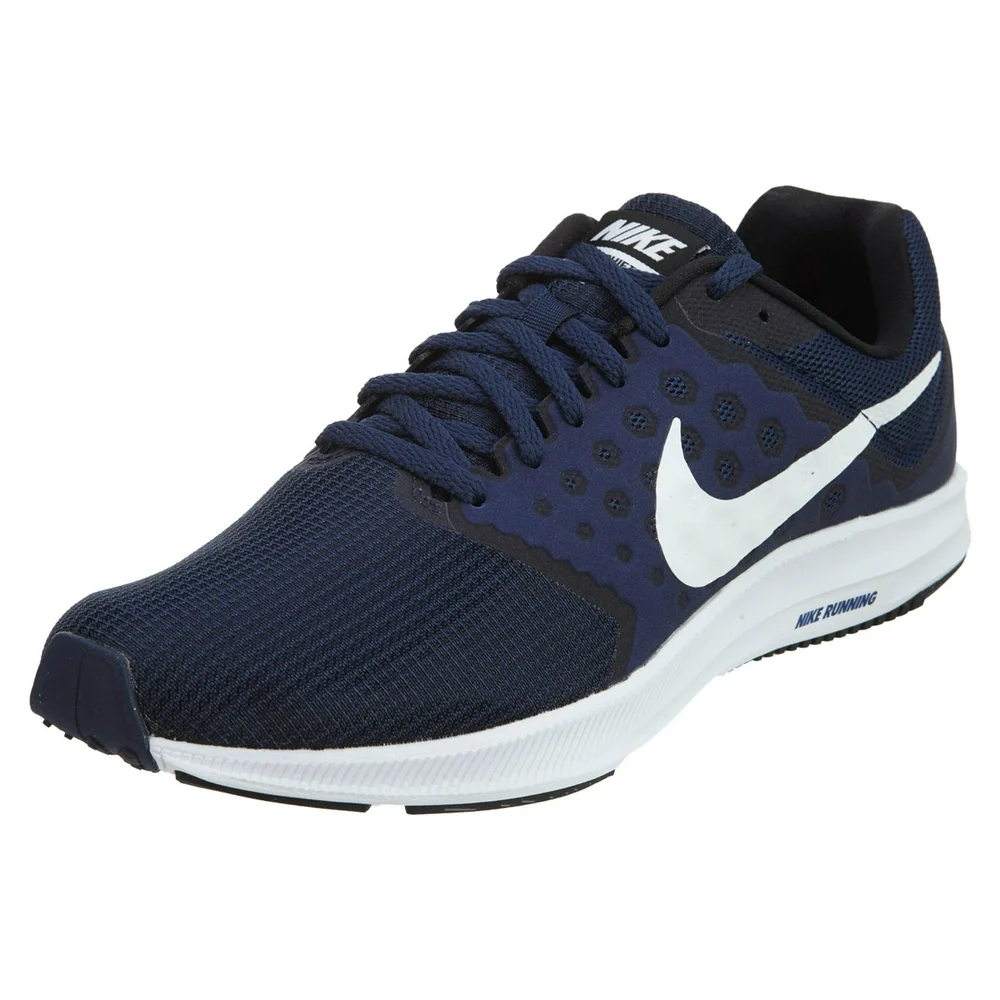
The Evolution of Nike Running Shoes: A Comprehensive Analysis
Running is not just a physical activity; it is a lifestyle choice that encompasses health, endurance, and dedication. Over the years, various brands have attempted to enhance the running experience, but few have had as significant an impact on the footwear market as Nike. Known for their innovation and commitment to quality, Nike shoes have established themselves as a leading choice for runners globally. In this article, we delve into the fascinating evolution of Nike running shoes, exploring their features, technologies, and how they’ve altered the running landscape.
The Origins of Nike
A Brief History
Nike was co-founded in 1964 by Phil Knight and Bill Bowerman as Blue Ribbon Sports. The transition to the Nike brand occurred in 1971, with the iconic Swoosh logo emerging soon after. The brand began gaining recognition with its early shoe designs and collaborations, specifically focusing on running. Bowerman’s innovative shoe designs stemmed from his experiences as a track coach, quickly leading to a series of enhancements that catered specifically to runners.
The Waffle Trainer
One of the first groundbreaking models was the Waffle Trainer, released in 1974. This shoe was notable for its unique outsole design—molded in the shape of a waffle iron, to provide better traction and cushioning. The Waffle Trainer exemplified Nike’s commitment to improving performance, establishing the brand as a significant player in the running shoe market.
Nike’s Innovations Over the Years
Air Technology
The introduction of Nike Air technology in 1979 marked a transformative moment in running footwear. By incorporating air cushioning into the midsole, Nike created a more comfortable and responsive run. The first shoe to use Nike Air was the Air Tailwind, which offered superior shock absorption, paving the way for future models. This technology paved the way for a host of other innovations that would revolutionize the running experience.
The Launch of the Air Max
In 1987, Nike unveiled the Air Max 1. This model featured visible air cushioning in the heel, making it not just a performance shoe, but a cultural icon as well. The Air Max range has since become synonymous with style and comfort, attracting both runners and fashion enthusiasts alike.
The Impact of the Zoom Series
In the late 1990s, Nike introduced the Zoom series, which focused on providing responsive cushioning for speed-focused runners. The Nike Zoom Air units were designed to compress and then spring back quickly, offering a snappy feel. This technology is still prevalent in many contemporary Nike running shoes and signifies the brand’s commitment to performance-driven design.
The Present-Day Lineup of Nike Running Shoes
Nike React Technology
One of the most significant advancements in recent years has been the introduction of Nike React technology. Featured in multiple models like the Nike React Infinity Run, this foam material is engineered to provide excellent energy return while maintaining a lightweight structure. Runners can benefit from enhanced cushioning that helps in reducing fatigue during longer runs. This innovation signals Nike’s continuous quest for improving the comfort and performance of running shoes.
Flyknit Construction
Nike’s Flyknit technology has also made waves in the running arena. Introduced in 2012, this method uses a knitted upper that molds to the shape of the foot, offering a snug and comfortable fit. Flyknit is lightweight and reduces the number of overlays and seams, enhancing breathability and reducing weight. The combination of Flyknit with responsive cushioning offers runners a shoe that feels like a natural extension of their foot.
Tailored Fit and Customization
Nike has taken personalization to the next level with its Nike By You program, allowing runners to customize their shoes based on individual preferences. This level of customization not only allows for personal expression but also ensures a more comfortable fit tailored to the wearer’s needs.
The Psychology of Choosing Running Shoes
Understanding Foot Types
Choosing the right running shoe is pivotal for performance and injury prevention. Understanding your foot type—flat, neutral, or high-arched—can guide you in selecting a shoe that enhances your natural stride. Nike offers specific models designed for different foot types, ensuring that runners find the right fit for their biomechanics.
The Importance of Cushioning
Cushioning plays a crucial role in a runner’s experience. Some runners prefer maximum cushioning for a plush feel, while others may opt for shoes with minimal cushioning for a more connected feel to the ground. Nike’s range of running shoes includes models with varying cushioning levels, allowing runners to select footwear that aligns with their personal preferences and running styles.
The Influence of Athletes and Endorsements
Partnerships with Elite Runners
Nike’s collaborations with elite athletes have contributed significantly to its reputation in the running community. Athletes like Eliud Kipchoge and Mo Farah have helped to promote various Nike models, often serving as test subjects for new technology. These partnerships not only enhance the brand’s credibility but also allow them to gather invaluable feedback for continuous improvement.
Marketing and Cultural Impact
Nike has expertly used marketing campaigns to influence the running culture. The slogan “Just Do It” resonates across communities and inspires individuals to overcome challenges. This approach has not only boosted sales but has also made Nike an integral part of the running lifestyle.
Sustainability in Nike’s Approach to Running Shoes
Commitment to Sustainable Practices
In recent years, Nike has ramped up its commitment to sustainability by adopting various eco-friendly practices in its manufacturing processes. The introduction of the “Move to Zero” campaign signifies Nike’s pledge to reduce carbon emissions and waste. The brand is increasingly using recycled materials in their running shoes, making strides towards a more sustainable future.
The Space Hippie Collection
Another notable initiative is the Space Hippie collection, which is made from factory floor scraps and recycled materials. This innovative approach to shoe design not only reduces waste but also provides runners with comfortable, performance-driven footwear that aligns with modern values.
The Future of Nike Running Shoes
Emerging Technologies
As technology continues to evolve, so too does Nike’s approach to running footwear. The brand is consistently exploring cutting-edge materials and designs to improve comfort, performance, and sustainability. Future Nike running shoes are likely to incorporate even more advanced forms of cushioning, personalized fit, and eco-friendly materials.
The Role of Data Analytics
The fusion of technology and data analytics is shaping the future of running shoes. Nike is harnessing machine learning and customer feedback to enhance their design processes and better understand the needs of runners. This focus on data is likely to result in increasingly tailored footwear solutions that cater to individual preferences.
 What Runners Should Consider When Choosing Nike Shoes
What Runners Should Consider When Choosing Nike Shoes
Assessing Running Style
When selecting the right Nike shoes for running, it is imperative to assess your running style. Different shoes cater to various styles, including heel striking, forefoot striking, or midfoot striking. Identifying your predominant running style can help you make a more informed decision.
Trying Before Buying
Given the vast array of Nike running shoes available, it is advisable for runners to physically try on different models. Comfort, fit, and feel are subjective, and what works for one runner may not work for another. Engaging in a test run can offer insight into whether a particular model meets your personal requirements.
Duration and Terrain
The terrain you frequently run on—whether it’s pavement, trail, or track—can significantly influence your shoe choice. Nike offers specialized models tailored to different surfaces. Consider the average duration of your runs; longer outings may require footwear with enhanced cushioning and support.
Conclusion
The journey of Nike running shoes is a testament to innovation, dedication, and evolution. From their humble beginnings to becoming an emblem of running culture, Nike has transformed the landscape of athletic footwear. By continually innovating and adapting to the needs of runners, Nike shoes remain a top choice for both amateurs and professional athletes alike. As we look forward to the future, it’s clear that Nike will continue to play a pivotal role in the running community, cementing its place as a leader in athletic footwear. Whether you’re a casual jogger or a competitive marathoner, Nike shoes running can provide the support, comfort, and performance you need to achieve your goals.
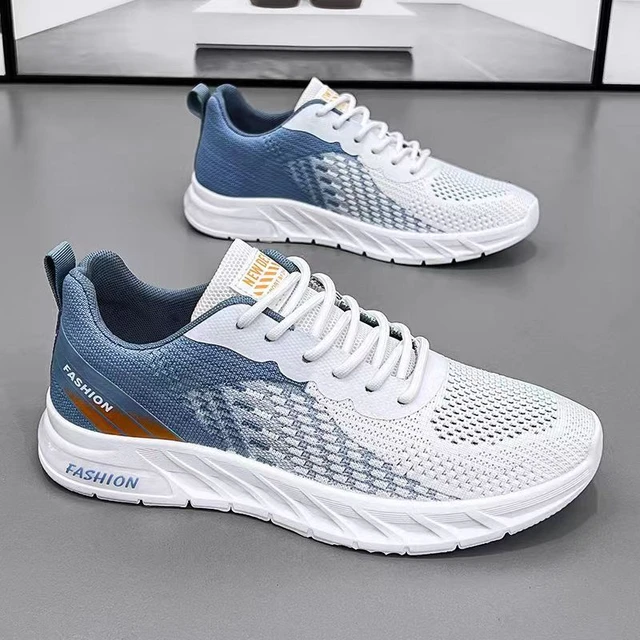
Nike Track Shoes: A Comprehensive Guide
Introduction to Nike Track Shoes
Nike is synonymous with sports excellence, innovation, and cutting-edge technology. For decades, athletes around the world have relied on Nike to deliver high-quality, high-performance gear that helps them push their boundaries and achieve new personal bests. One pivotal component of their offering is their line of track shoes. Whether you’re an aspiring sprinter, a seasoned middle-distance runner, or a marathon enthusiast, Nike has a track shoe for every kind of athlete.
In this comprehensive guide, we will delve deep into the world of Nike track shoes. We’ll discuss their history, the technology behind them, and the various models available, helping you make an informed decision for your athletic needs.
The History of Nike Track Shoes
The Birth of a Brand
Nike’s journey began in 1964 when Phil Knight and Bill Bowerman founded Blue Ribbon Sports, which would later become Nike, Inc. Bill Bowerman, a track and field coach, had an insatiable desire to create a better running shoe for his athletes. In 1971, the infamous Swoosh was born, and by 1972, they introduced their first track shoe – the ‘Nike Cortez’. This shoe set the stage for what would become an empire in athletics.
Early Innovations and Milestones
Throughout the 1970s and 1980s, Nike introduced several innovations that changed the landscape of track and field shoes. Key milestones include the introduction of the waffle sole, which provided unmatched traction and cushioning, and the use of lightweight, breathable materials. Notably, the Nike Zoom series, introduced in the 1990s, incorporated advanced technology to enhance performance.
The Technology Behind Nike Track Shoes
Lightweight Materials
Nike track shoes are engineered with lightweight materials to ensure that athletes can perform at their peak without being weighed down. Modern shoes are often made with engineered mesh, Flyknit, and other proprietary materials that provide breathability, flexibility, and minimal weight.
Nike Air and React Foam
One of the standout features in many Nike track shoes is the use of Nike Air and React foam. Nike Air technology involves air-cushioning units that absorb impact and provide a responsive feel. React foam, on the other hand, offers a soft and springy response, dramatically improving comfort and energy return.
Precision-Fit Uppers
Precision-fit uppers are crucial for ensuring the shoe conforms to the foot, providing a snug but comfortable fit. Technologies like Flywire incorporate strong yet flexible fibers that hold the foot in place without restricting movement, offering both stability and freedom.
Traction and Outsole Design
Traction is key in track shoes to prevent slipping and ensure maximum efficiency in every stride. Nike employs various outsole designs, including waffle patterns and multi-directional spikes, to provide superior grip on diverse surfaces.
Popular Nike Track Shoe Models
Nike ZoomX Vaporfly NEXT%
The Nike ZoomX Vaporfly NEXT% is a revolutionary shoe designed for long-distance running. It features a full-length carbon fiber plate and ZoomX foam that provide unparalleled energy return. The upper is made from Vaporweave material, which is both lightweight and breathable, reducing the weight of the shoe even further.
Nike Air Zoom Pegasus
The Air Zoom Pegasus is another iconic model in Nike’s track shoe lineup. Known for its versatility, the Pegasus is suitable for both training and racing. Its cushioning system combines Nike Air and React foam, providing a balanced and responsive feel.
Nike Zoom Rival S 9
The Nike Zoom Rival S 9 is specifically designed for sprinters. It features a sleek design with a lightweight mesh upper and a spike plate with removable spikes for optimal traction. This shoe is ideal for athletes competing in short-distance track events.
Nike Dragonfly
Engineered for distance runners, the Nike Dragonfly is a performance beast on the tracks. It features a Pebax® plate, providing flexibility and propulsion. The mesh upper ensures breathability and the ZoomX foam offers a plush and responsive cushioning.
Choosing the Right Nike Track Shoe for Your Needs
Assessing Your Running Style
Before choosing a Nike track shoe, it’s essential to assess your running style. Are you a sprinter who needs a lightweight shoe with unbeatable traction or a marathon runner looking for maximum cushioning? Understanding your specific needs will help narrow down your options.
Understanding Your Foot Type
Different foot types – flat, neutral, or high-arched – require different types of support. Nike offers track shoes that cater to various foot shapes, ensuring optimal comfort and performance. Getting an assessment from a podiatrist or using a foot scanner can help identify the best shoe for your foot type.
Considering Your Training Regimen
Your training regimen is another crucial factor in choosing the right track shoe. If you’re training daily or participating in multiple events, you may need more than one type of shoe. For instance, you might opt for a pair of lightweight racing spikes for competitions and a more cushioned pair for daily training.
Maintenance and Care for Long-lasting Performance
Cleaning Your Track Shoes
Maintaining your Nike track shoes involves regular cleaning. Avoid tossing them in a washing machine; instead, use a soft brush, mild detergent, and warm water to clean the upper and outsole. Proper cleaning ensures that dirt and grime don’t degrade the materials over time.
Proper Storage
Store your track shoes in a cool, dry place. Avoid exposing them to direct sunlight for prolonged periods as it can wear down the materials and fade colors. Use shoe trees or stuff the shoes with newspaper to maintain their shape when not in use.
Regular Inspection and Replacement
Inspect your shoes regularly for signs of wear and tear. Look at the outsole tread pattern and the midsole for signs of compression. As a general rule, replace your track shoes every 300 to 500 miles, or sooner if you notice a decline in performance.
 The Role of Nike in Sustainable Footwear
The Role of Nike in Sustainable Footwear
Sustainable Materials
Nike has been at the forefront of incorporating sustainable practices in their production. Many Nike track shoes are now produced with recycled materials, reducing the environmental footprint. The company’s ‘Move to Zero’ initiative aims to achieve zero carbon and zero waste, focusing on using renewable energy and sustainable materials.
Circular Product Design
Nike’s commitment to sustainability extends to their product life cycle. Circular design involves creating products that can be fully recycled at the end of their lifecycle. Nike’s initiative to accept old shoes for recycling ensures that less waste ends up in landfills and more materials are reused in new products.
Consumer Awareness Programs
Nike also invests in consumer awareness programs, teaching athletes the importance of sustainability. By fostering a community that values environmentally conscious choices, Nike hopes to lead by example and encourage other companies to adopt similar practices.
Testimonials from Athletes
Professional Insights
Many professional athletes swear by Nike track shoes. For instance, marathon world record holder Eliud Kipchoge credits the Nike ZoomX Vaporfly NEXT% for contributing to his success. Sprinters like Michael Johnson have praised the lightweight design and superior traction of Nike’s sprint shoes, enabling them to perform at their best.
Everyday Runners
Amateur athletes and everyday runners also have glowing testimonials about Nike track shoes. Many report improvements in their performance, reduced injury rates, and overall comfort. The community-centric approach of Nike, coupled with their innovation, makes these shoes a favorite among all levels of athletes.
Conclusion
Nike track shoes have a storied history of innovation, performance, and excellence. From the earliest models to the latest cutting-edge designs, Nike has consistently raised the bar in athletic footwear. Whether you’re an elite athlete or a recreational runner, the right pair of Nike track shoes can make all the difference in your performance.
By understanding the technology behind these shoes, evaluating your needs, and learning how to maintain them, you can make an informed decision that will help you achieve your athletic goals. Moreover, with Nike’s commitment to sustainability, you can feel good about making an environmentally conscious choice.
Nike track shoes are more than just footwear; they’re an integral part of the journey towards athletic excellence. So, lace-up, hit the track, and push your limits – because with Nike, there are no finish lines, only new beginnings.
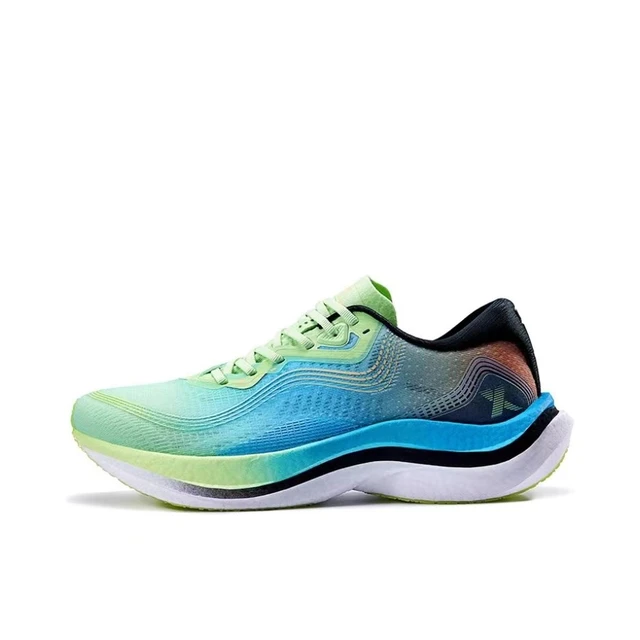
Nike Long-Distance Runners: Unveiling the Best Picks for 2024
Top Choices for Long-Distance Running Shoes
Choosing the right long-distance running shoes is crucial for athletes and enthusiasts who want to ensure performance and comfort during their runs. Nike, a leading brand in sports footwear, has continued to innovate and deliver a range of options catering to varied long-distance running needs. Whether you’re training for a marathon, hitting the trails, or seeking a daily trainer, Nike has engineered shoes to support every stride.
Key Factors in Selecting Nike Running Shoes
When selecting the ideal running shoe, one must consider factors like cushioning, stability, weight, and fit. Nike’s range provides options featuring their signature technology such as ZoomX foam, React midsoles, and Flyknit uppers, intending to enhance energy return, provide reliable support, and offer a breathable yet secure fit. Runners should also consider their individual gait, arch type, and training intensity when choosing their optimal Nike companion.
Nike Pegasus 41: The Daily Trainer
The Nike Pegasus 41 emerges as an excellent daily trainer, thanks to its durable ReactX foam and dual Air Zoom units that promise a cushioned and responsive ride. It’s well-padded for comfort yet structured enough to handle your daily miles. With good breathability and solid traction, the Pegasus 41 is designed for long-lasting performance, though it may not cater to runners preferring a maximalist cushioning.
Nike Alphafly 3: Marathon Optimized Design
Built for breaking long-distance records, the Nike Alphaly 3 stands out with its ZoomX midsole, carbon fiber plate, and Air pods that work in unison to provide a propulsive and stable ride. Its repositioned Air Pods enhance overall performance, particularly evident in marathon distances. But, due to its specialized build, this shoe is best reserved for race days rather than daily training.
Nike Vaporfly 3: Best for Road Racing
The Nike Vaporfly 3 is the pinnacle of Nike’s racing technology, boasting a carbon fiber plate encased in soft, responsive ZoomX foam. It’s engineered to deliver speed and efficiency for long-distance road races. Lightweight and designed for top-tier athletes, it’s a racing shoe meant for achieving personal bests, with the caveat that it may not be durable enough for daily training purposes.
Specialty Design for Various Running Needs
Each runner has unique demands, and Nike addresses these through specialty designs that cater to a variety of running scenarios, from the comfort-driven enthusiast to the trailblazing adventurer. Let’s delve into some of the standout models that exemplify Nike’s commitment to serving every runner’s needs.
Nike InfinityRN 4: Maximum Comfort and Support
For runners who prioritize comfort and support, especially over long distances, the Nike InfinityRN 4 is a frontrunner. The latest iteration of the Infinity Run series sports an all-new ReactX plush midsole, complemented by a soft and stretchy Flyknit upper. Nike’s enhancements in cushioning make it ideal for heel strikers and those who enjoy their runs wrapped in luxury. Heavily cushioned, the InfinityRN 4 promises to be the solace for your soles, although it tips the scales heavier than its companions.
Nike Pegasus Trail 5: The Road-to-Trail Hybrid
When faced with varying terrain, runners find a versatile ally in the Nike Pegasus Trail 5. Designed for the unpredictable nature of trail running and robust enough for the road, this shoe adapts to diverse conditions. Its key features include a durable, all-terrain outsole and ReactX foam that absorbs impact efficiently while providing energy return. The breathable yet protective upper ensures that your feet are well taken care of, regardless of the environment.
Nike Zegama 2: Trail-Blazing Features
For those who seek the thrill of the trail, the Nike Zegama 2 is nothing short of extraordinary. Armed with a Vibram Megagrip outsole and a ZoomX midsole, this shoe offers exceptional traction and a cushioning experience that’s hard to match. Designed for rugged use, the Zegama 2 endures what the trails throw at it while enabling a comfortable and dynamic stride. It’s an ideal pick for midfoot and forefoot strikers who are gearing up for challenging terrain.
Nike Ultrafly: The Ultra Running Champion
When ultra-distances call, rely on the Nike Ultrafly. This trail running model caters to endurance athletes who seek reliability, comfort, and speed. Athletes enjoy its luxurious ZoomX foam midsole combined with a carbon plate for energy return and a Vibram outsole for multisurface traction. The Ultrafly lets ultra-marathon runners focus on the experience, not their gear. However, runners aiming for lighter footwear for faster-paced runs might choose a different option.
Comparison and Unique Features
When you’re deep into the running community, or even if you’re just starting out, comparing various running shoes becomes second nature. Each brand, and indeed each model, has its unique set of features that cater to different types of runners. In the realm of Nike long-distance running shoes, there’s more to each design than meets the eye. Factors such as the evolution of materials, technological integration, and feedback from real-world testing all play into how these shoes stack up against one another.
The Evolution of Nike Running Shoes Technology
Nike has long been at the forefront of running shoe technology, and its evolution reflects in the long-distance offerings available today. The integration of ZoomX foam and React midsoles in Nike shoes showcases a leap forward in energy return and cushioning, benefiting runners pursuing personal bests or simply looking for a comfortable ride. The advent of carbon fiber plates, first popularized by the Vaporfly series, revolutionized the race day experience, significantly improving runner efficiency over long distances.
As each year brings new innovations, Nike has refined its Flyknit technology for a more adaptive and supportive fit while retaining breathability. And with the implementation of more sustainable practices, some of the newer models feature eco-friendly materials without compromising performance. The brand’s dedication to advancing shoe technology not only enhances the runner experience but also pushes the industry standards.
The Performance Showcase: Nike Shoes in Action
When testing Nike’s long-distance running shoes, athletes assess them under various conditions to gauge their true capabilities. For example, runners praise the Nike Pegasus Trail 5 for its versatility, as it easily transitions from pavement to trail with its dynamic grip and cushioning. Meanwhile, marathoners experience explosive speed and unmatched responsiveness from primary road shoes like the Vaporfly 3, showcasing their purpose-built design.
Witnessing these shoes in action, from the steady reliability of the Pegasus 41 as a daily trainer to the endurance-focused build of the Ultrafly for ultra marathons, provides informed insights into which model could best suit individual running styles and goals.
Pros and Cons: Insights from Testing Nike Long-Distance Options
Real-world testing is invaluable, and for each model, there are highs and lows. For the Pegasus 41, it’s the balance between comfort and responsiveness that’s a major pro. But, a con for some may be the lack of maximalist cushioning, which can be crucial for runners seeking ultimate impact protection.
the Alphafly 3 consistently impresses with its forward momentum and lightness, yet the specialized nature of its design means it’s not universally suitable—limited traction and high price points being notable cons. The InfinityRN 4 excels in comfort but falls short on weight and breathability, which may deter those running in hotter climates or seeking a performance edge.
 Style and Aesthetics
Style and Aesthetics
While performance and functionality are paramount, style and aesthetics also play a role in choosing running shoes. Nike long distance running shoes are known for their sleek and modern designs, which not only look great but also reflect the brand’s commitment to innovation. Whether you prefer bold, eye-catching colors or a more understated look, Nike offers a variety of styles to match your personal taste.
Wearing shoes that you find visually appealing can boost your confidence and motivation, making your runs more enjoyable. Nike’s attention to detail in design and aesthetics ensures that you not only perform well but also look good doing it. The stylish designs of Nike long distance running shoes make them a popular choice among runners of all levels.
Customization and Personalization
Nike’s Nike By You platform allows runners to customize their long-distance running shoes, adding a personal touch to their gear. This platform offers various customization options, from selecting colors and materials to adding personalized text or graphics. Customization not only makes your shoes unique but also adds an element of excitement and pride in wearing something you helped design.
Personalized shoes can also enhance your connection to your gear, leading to increased motivation and performance. Knowing that you’re wearing a one-of-a-kind pair of shoes tailored to your preferences can provide an extra boost of confidence during long runs. Nike’s customization options ensure that your running shoes are as unique as you are, reflecting your personality and style.
Final Thoughts
Unbiased assessments of these shoes, considering both their strengths and limitations, help runners make educated choices that align with their personal running needs, conditions, and preferences. Ultimately, the quest for the perfect long-distance running shoe is ongoing, with every athlete looking for that personal fit that feels just right.

